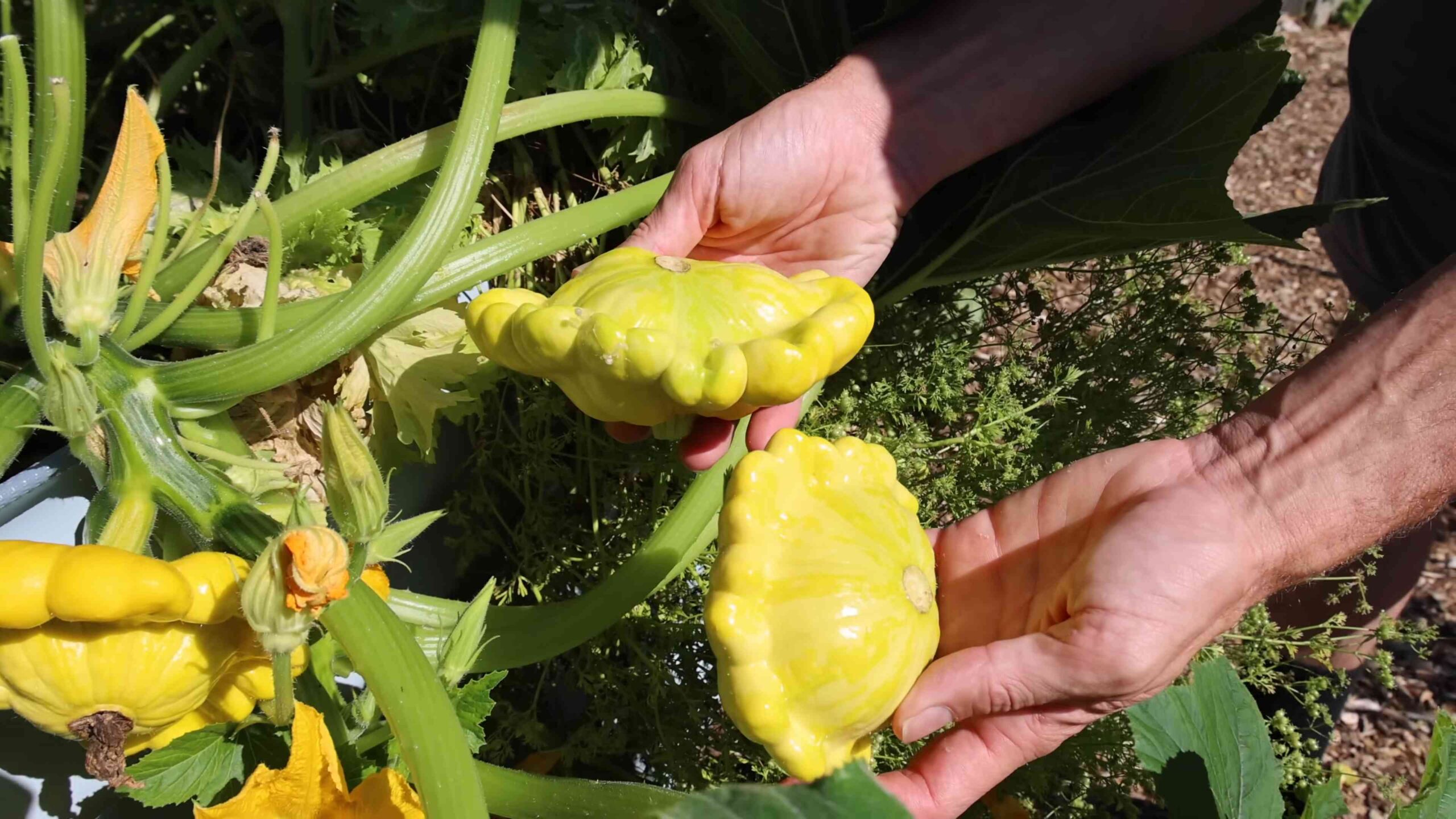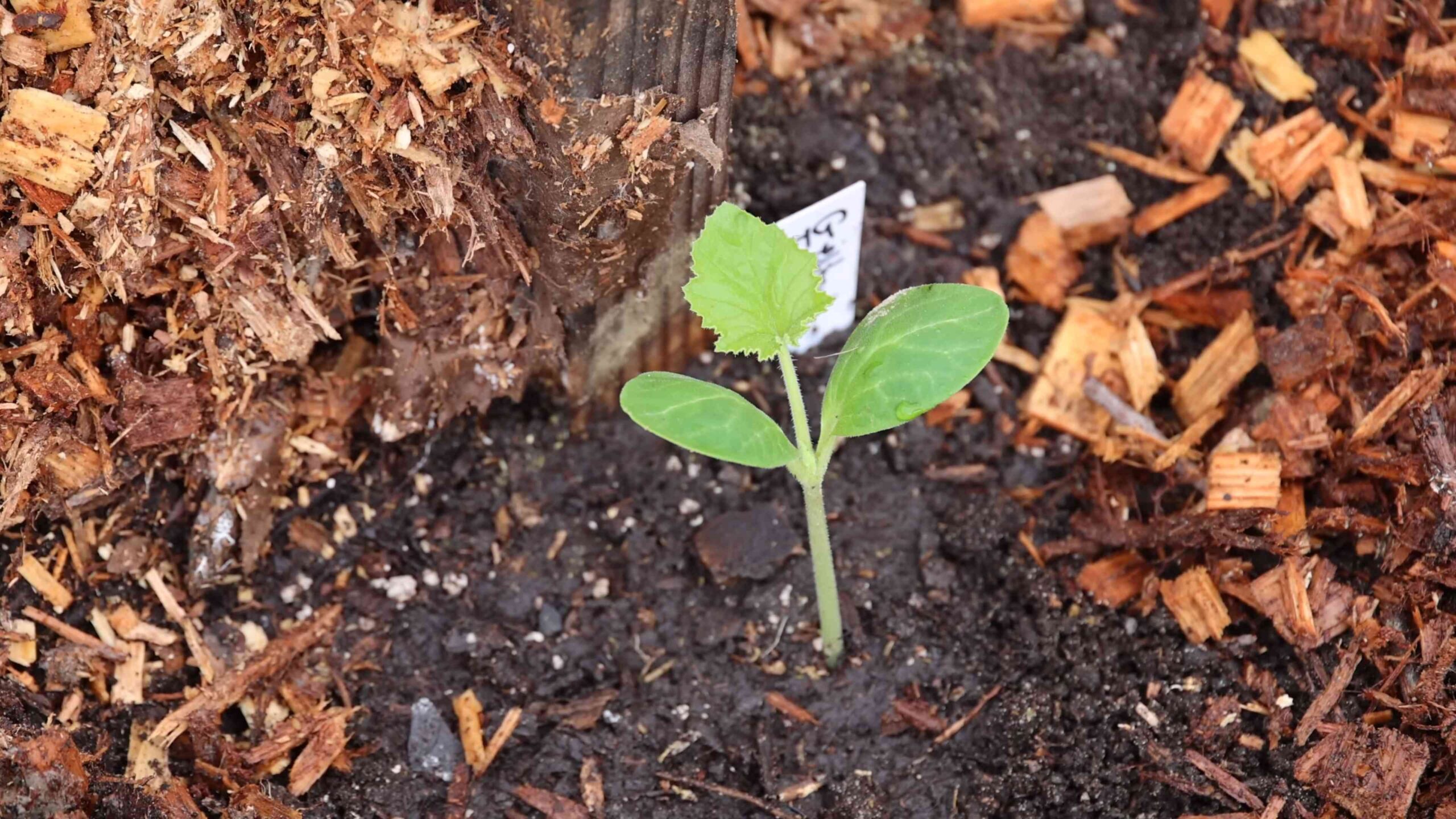Vertical Squash Growing DIY: Unleash the Gardener Within! Ever dreamed of a bountiful squash harvest but thought your tiny balcony or postage-stamp backyard was too small? Well, dream no more! I’m here to tell you that you can absolutely cultivate delicious, homegrown squash, even in the most limited spaces, with a clever vertical squash growing DIY project.
For centuries, gardeners have sought innovative ways to maximize yields. From the ancient hanging gardens of Babylon to the modern-day urban farming movement, the desire to cultivate food in unconventional spaces has always been strong. This DIY project taps into that rich history, offering a practical and aesthetically pleasing solution for modern gardeners.
Let’s face it, traditional squash growing can be a sprawling affair. Those vigorous vines take up a *ton* of space! But what if you could train them upwards, creating a living green wall bursting with delicious squash? That’s precisely what this guide will show you. Not only will you save precious ground space, but you’ll also improve air circulation around your plants, reducing the risk of diseases. Plus, harvesting becomes a breeze! So, ditch the sprawling vines and embrace the vertical revolution. I’m excited to share my favorite tips and tricks for successful vertical squash growing DIY, transforming your small space into a squash-producing powerhouse!

DIY Vertical Squash Growing: A Space-Saving Garden Hack!
Hey there, fellow gardeners! Are you dreaming of a bountiful squash harvest but short on space? I totally get it! Traditional squash plants are notorious for their sprawling vines, taking over entire garden beds. But don’t despair! I’m going to show you how to grow squash vertically, maximizing your yield and minimizing the footprint. This method is perfect for small gardens, balconies, or even patios. Let’s get started!
Choosing the Right Squash Variety
Before we dive into the construction, it’s crucial to select the right squash variety. Not all squash are created equal when it comes to vertical growing. Bush varieties are generally better suited than the long-vining types. Here are a few of my favorites:
* Zucchini: These are generally compact and produce prolifically. Look for bush varieties like ‘Black Beauty’ or ‘Early Crookneck’.
* Yellow Squash: Similar to zucchini, yellow squash bush varieties are excellent choices. ‘Straightneck’ and ‘Gold Rush’ are popular options.
* Patty Pan Squash: These adorable, saucer-shaped squash are relatively compact and easy to manage vertically.
* Delicata Squash: While technically a winter squash, Delicata can be trained vertically with proper support.
* Acorn Squash: Choose smaller acorn squash varieties for easier management.
Avoid sprawling varieties like pumpkins or butternut squash unless you have a very sturdy and extensive support system.
Building Your Vertical Squash Support System
There are several ways to create a vertical support system for your squash. I’m going to walk you through building a simple and effective trellis using readily available materials.
Materials You’ll Need:
* Wooden Stakes or Posts: (4) 6-8 feet long. Cedar or pressure-treated wood is best for longevity.
* Heavy-Duty Garden Twine or Jute: Enough to create a sturdy trellis grid.
* Wire Mesh or Netting (Optional): Provides additional support for the vines and fruits. Hardware cloth with 2-inch openings works well.
* Measuring Tape: For accurate spacing.
* Hammer or Mallet: To drive the stakes into the ground.
* Staple Gun (if using wire mesh): To attach the mesh to the stakes.
* Gloves: To protect your hands.
* Scissors or Utility Knife: To cut twine or mesh.
* Level: To ensure your structure is straight.
Step-by-Step Instructions:
1. Prepare the Planting Area: Choose a sunny location that receives at least 6-8 hours of direct sunlight per day. Amend the soil with compost or well-rotted manure to provide essential nutrients. Squash are heavy feeders!
2. Drive the Stakes: Position the four stakes in a square or rectangular formation, approximately 3-4 feet apart. The exact spacing will depend on the variety of squash you’re growing and how much space you have. Use a hammer or mallet to drive the stakes firmly into the ground, ensuring they are stable and secure. Aim for at least 1-2 feet of the stake to be buried in the soil.
3. Create the Trellis Grid: This is where the magic happens! Start by tying the twine to one of the bottom stakes, about 6 inches from the ground. Then, run the twine horizontally to the opposite stake and tie it securely. Continue this process, creating horizontal rows of twine spaced approximately 6-8 inches apart.
4. Add Vertical Support: Now, weave the twine vertically through the horizontal rows, creating a grid pattern. Tie the twine securely to each horizontal row to create a strong and supportive structure. Again, space the vertical rows about 6-8 inches apart.
5. Reinforce with Wire Mesh (Optional): If you’re using wire mesh, attach it to the stakes using a staple gun. Make sure the mesh is taut and securely fastened to the stakes. The mesh will provide extra support for the vines and prevent the fruits from weighing down the trellis too much.
6. Check for Stability: Once the trellis is complete, give it a good shake to ensure it’s sturdy and can withstand the weight of the growing squash vines and fruits. If necessary, add additional stakes or twine for extra support.
7. Plant Your Squash Seedlings: Plant your squash seedlings at the base of the trellis, spacing them according to the variety’s recommendations. Typically, 18-24 inches apart is a good starting point.
8. Water Thoroughly: After planting, water the seedlings thoroughly to help them establish their roots.
Training Your Squash Vines
Now that your support system is in place, it’s time to train your squash vines to grow vertically. This is an ongoing process that requires a little patience and attention.
Tips for Training:
* Gently Guide the Vines: As the squash vines grow, gently guide them up the trellis, weaving them through the twine or mesh.
* Use Plant Ties (if needed): If the vines are struggling to attach to the trellis, you can use soft plant ties to secure them in place. Avoid using wire or anything that could damage the vines.
* Prune Excess Foliage: Pruning can improve air circulation and sunlight penetration, reducing the risk of disease. Remove any yellowing or damaged leaves. You can also prune some of the side shoots to encourage the plant to focus its energy on producing fruits.
* Support Developing Fruits: As the squash fruits develop, they can become quite heavy. If necessary, provide additional support by creating slings using old pantyhose or fabric scraps. Tie the slings to the trellis to support the weight of the fruits.
* Monitor for Pests and Diseases: Regularly inspect your squash plants for pests and diseases. Common squash pests include squash bugs, squash vine borers, and aphids. Treat any infestations promptly to prevent them from damaging your plants. Powdery mildew is a common fungal disease that can affect squash plants. Improve air circulation and apply a fungicide if necessary.
Watering and Fertilizing
Squash plants are thirsty and hungry! Proper watering and fertilization are essential for a successful vertical squash garden.
Watering:
* Water deeply and regularly: Squash plants need consistent moisture, especially during hot weather. Water deeply at the base of the plant, avoiding wetting the foliage, which can promote fungal diseases.
* Check the soil moisture: Stick your finger into the soil to check the moisture level. If the top inch of soil feels dry, it’s time to water.
* Use a soaker hose or drip irrigation: These methods deliver water directly to the roots, minimizing water waste and reducing the risk of foliar diseases.
* Water in the morning: Watering in the morning allows the foliage to dry out before nightfall, reducing the risk of fungal diseases.
Fertilizing:
* Use a balanced fertilizer: Squash plants benefit from a balanced fertilizer with equal amounts of nitrogen, phosphorus, and potassium (e.g., 10-10-10).
* Fertilize regularly: Fertilize your squash plants every 2-3 weeks during the growing season.
* Side-dress with compost: In addition to fertilizer, you can side-dress your squash plants with compost or well-rotted manure to provide a slow-release source of nutrients.
* Avoid over-fertilizing: Over-fertilizing can lead to excessive foliage growth and reduced fruit production. Follow the instructions on the fertilizer label carefully.
Harvesting Your Vertical Squash
The moment you’ve been waiting for! Harvesting your delicious, homegrown squash.
Harvesting Tips:
* Harvest at the right stage: The harvesting time depends on the variety of squash you’re growing. Zucchini and yellow squash are typically harvested when they are young and tender, about 6-8 inches long. Patty pan squash can be harvested when they are about 3-4 inches in diameter. Delicata and acorn squash are harvested when they are fully mature and the skin is hard.
* Use a sharp knife or pruners: Cut the squash from the vine, leaving a short stem attached.
* Handle with care: Squash can bruise easily, so handle them with care.
* Store properly: Zucchini and yellow squash can be stored in the refrigerator for up to a week. Delicata and acorn squash can be stored in a cool, dry place for several months.
Troubleshooting Common Issues
Even with the best planning, you might encounter some challenges along the way. Here are a few common issues and how to address them:
* Poor Fruit Set: If your squash plants are producing lots of flowers but no fruits, it could be due to a lack of pollination. Squash plants rely on bees and other pollinators to transfer pollen from the male flowers to the female flowers. You can hand-pollinate the flowers yourself by using a small paintbrush to transfer pollen from the male flowers to the female flowers.
* Pest Infestations: As mentioned earlier,

Conclusion
So, there you have it! Transforming your squash patch with this vertical squash growing DIY method isn’t just a space-saving solution; it’s a game-changer for your garden’s productivity and overall health. We’ve walked you through the simple steps, highlighted the benefits, and hopefully, inspired you to ditch the sprawling vines and embrace a more organized, efficient, and visually appealing way to cultivate your favorite squash varieties.
Think about it: no more battling powdery mildew due to poor air circulation, no more losing precious garden real estate to sprawling vines, and no more struggling to find ripe squash hidden beneath a tangled mess of leaves. Vertical growing elevates your squash, literally and figuratively! It allows for better sunlight penetration, improved air flow, and easier harvesting. Plus, it adds a unique architectural element to your garden that’s sure to impress your neighbors.
But the beauty of this DIY project lies in its adaptability. Feel free to experiment with different support structures. While we’ve suggested using sturdy trellises or cattle panels, you could also repurpose old ladders, create a teepee structure with bamboo poles, or even utilize a strong fence. The key is to ensure the structure is robust enough to support the weight of the mature squash.
Consider the variety of squash you’re growing as well. Smaller, bush-type squash varieties like zucchini or yellow squash are naturally well-suited for vertical growing. For larger varieties like pumpkins or butternut squash, you might need to provide additional support for each individual fruit as it develops. This could involve using slings made from old pantyhose or netting to cradle the squash and prevent it from pulling on the vine.
Don’t be afraid to get creative with your planting arrangements. Companion planting can be particularly effective in a vertical garden. Consider planting herbs like basil or marigolds at the base of your squash plants to deter pests and attract beneficial insects. You could also interplant with flowers like nasturtiums, which are not only beautiful but also edible and can help to repel squash bugs.
The possibilities are truly endless! The most important thing is to have fun and experiment. Gardening should be an enjoyable and rewarding experience, and this vertical squash growing DIY project is a fantastic way to add a new dimension to your gardening endeavors.
We are confident that once you try this method, you’ll be amazed by the results. You’ll not only save space and improve your squash yield, but you’ll also create a more beautiful and manageable garden. So, grab your tools, gather your materials, and get ready to transform your squash patch.
We’re eager to hear about your experiences! Share your photos, tips, and tricks in the comments below. Let’s build a community of vertical squash growers and learn from each other’s successes and challenges. Happy gardening!
Frequently Asked Questions (FAQ)
What types of squash are best suited for vertical growing?
While many squash varieties can be grown vertically, some are naturally better suited than others. Bush-type squash, such as zucchini, yellow squash, and pattypan squash, are generally easier to manage because they tend to be more compact and produce smaller fruits. Vining varieties, like butternut squash, spaghetti squash, and even some pumpkins, can also be grown vertically, but they require more support and attention. For larger varieties, you’ll need to provide individual slings or supports for each fruit to prevent them from pulling on the vine and potentially breaking it. Consider the mature size and weight of the squash when choosing a variety for vertical growing. Smaller, more manageable varieties are ideal for beginners.
How do I support the squash as it grows vertically?
The type of support you use will depend on the variety of squash you’re growing and the overall aesthetic you’re aiming for. Sturdy trellises, cattle panels, or even repurposed ladders can all work well. The key is to ensure the structure is strong enough to support the weight of the mature squash. For vining varieties, you’ll need to train the vines to climb the support structure by gently guiding them and tying them loosely with twine or plant ties. As the squash fruits develop, you may need to provide additional support for each individual fruit. This can be done by creating slings from old pantyhose, netting, or even fabric scraps. The slings should be attached to the support structure and cradle the squash, preventing it from pulling on the vine.
How often should I water and fertilize vertically grown squash?
Vertically grown squash tends to dry out more quickly than squash grown on the ground, so it’s important to water them regularly, especially during hot, dry weather. Check the soil moisture regularly and water deeply whenever the top inch or two feels dry. Avoid overhead watering, as this can promote fungal diseases. Instead, water at the base of the plant, directing the water towards the roots. Fertilize your vertically grown squash regularly with a balanced fertilizer. Follow the instructions on the fertilizer package for application rates. You can also supplement with compost tea or other organic fertilizers to provide additional nutrients.
What are some common pests and diseases that affect vertically grown squash, and how can I prevent them?
Vertically grown squash is still susceptible to the same pests and diseases as squash grown on the ground, but the improved air circulation can help to reduce the risk of some problems. Common pests include squash bugs, squash vine borers, and aphids. Regularly inspect your plants for signs of pests and take action promptly if you find any. You can handpick pests, use insecticidal soap, or introduce beneficial insects like ladybugs. Common diseases include powdery mildew and downy mildew. To prevent these diseases, ensure good air circulation, avoid overhead watering, and apply a fungicide if necessary. Companion planting with herbs like basil or marigolds can also help to deter pests and diseases.
Can I grow squash vertically in containers?
Yes, you can absolutely grow squash vertically in containers! Choose a large container that is at least 24 inches in diameter and 18 inches deep. Make sure the container has drainage holes to prevent waterlogging. Use a high-quality potting mix that is well-draining and rich in organic matter. Provide a sturdy trellis or other support structure for the squash to climb. Water and fertilize regularly, as container-grown plants tend to dry out more quickly than those grown in the ground. Choose bush-type squash varieties for container growing, as they are more compact and easier to manage.
How does vertical squash growing impact yield?
Vertical squash growing can actually increase your yield compared to traditional ground growing. By providing better air circulation and sunlight penetration, vertical growing promotes healthier plants and more abundant fruit production. The improved air circulation also helps to reduce the risk of fungal diseases, which can significantly impact yield. Additionally, vertical growing makes it easier to harvest the squash, as the fruits are more visible and accessible. This can lead to fewer missed harvests and less wasted produce.
What if my squash vine is too heavy for the trellis?
If your squash vine becomes too heavy for the trellis, there are several things you can do. First, ensure that your trellis is sturdy enough to support the weight of the mature squash. If necessary, reinforce the trellis with additional supports. Second, provide individual slings or supports for each fruit as it develops. This will help to distribute the weight and prevent the vine from breaking. You can use old pantyhose, netting, or fabric scraps to create slings. Finally, you can prune the vine to reduce its overall size and weight. Remove any excess leaves or side shoots that are not producing fruit.





Leave a Comment